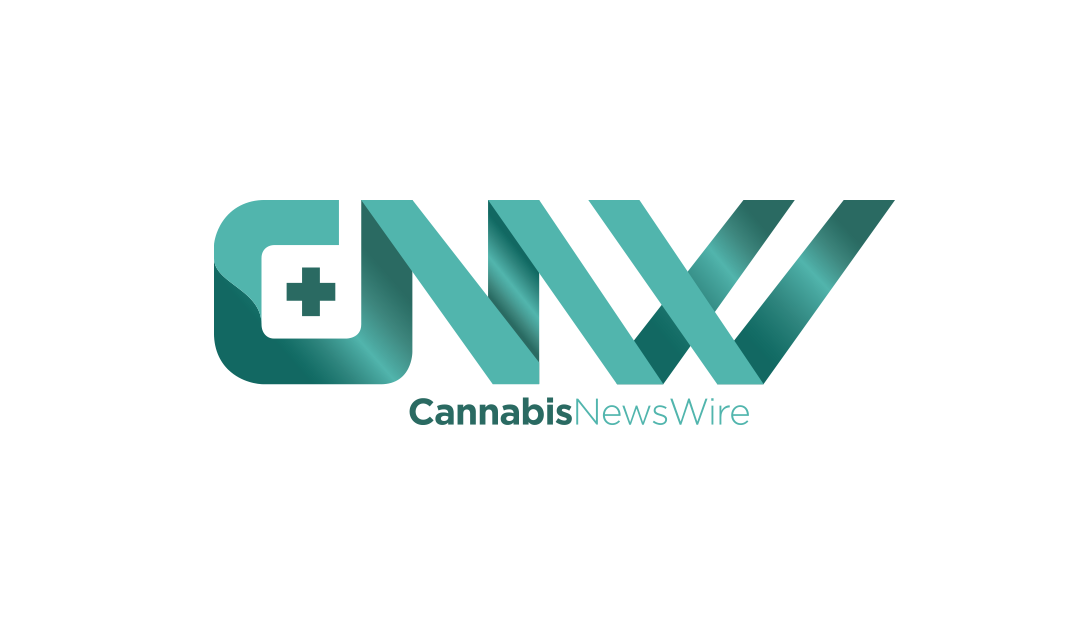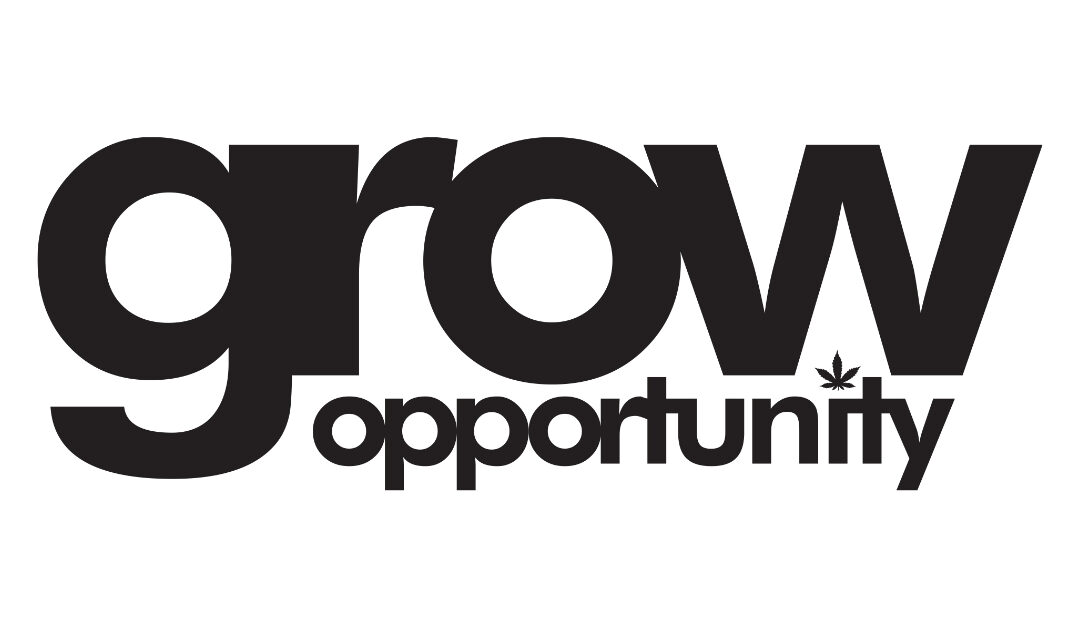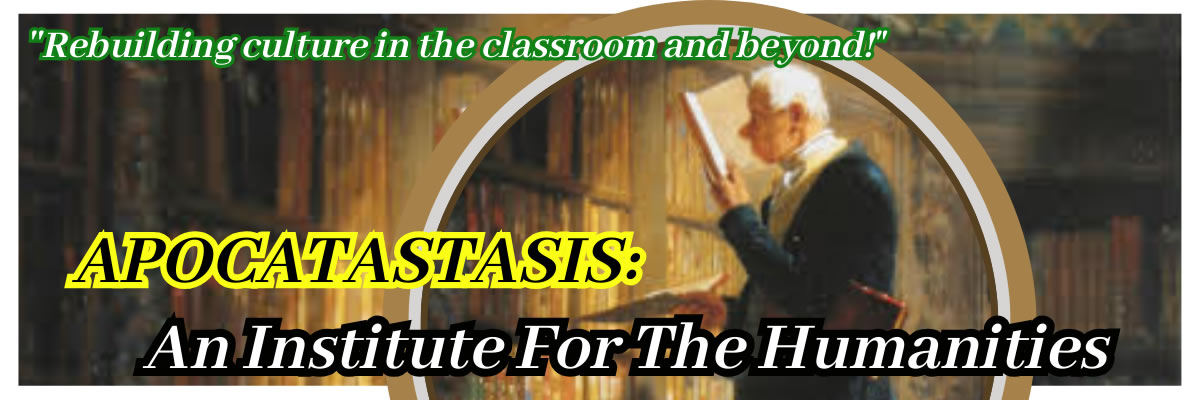
by Grow Up Conference | Dec 27, 2024 | Cannabis News Wire, Media Partners
Non-German companies could potentially benefit from new recreational marijuana pilot programs in Germany, observers say. The European nation partially decriminalized adult-use cannabis on April 1, 2024, becoming the 9th country in the world to legalize cannabis and granting millions of Germans access to the drug.
Interestingly, Germany’s recreational cannabis measures also allow foreign companies to enter the German market via a cannabis pilot program license. These entities would need approval from the German municipality where they would set up shop. Furthermore, they have to prove that their pilot program had a scientific or experimental component to receive a pilot program license.
The Federal Ministry of Food and Agriculture (BMEL) would then give final approval for qualifying programs and issue pilot program licenses. Businesses and institutions that meet these conditions will have a chance to enter the German cannabis market and take advantage of all the opportunities they might find there. Both Switzerland and the Netherlands have similar pilot programs.
As per current German marijuana rules, medical cannabis can only be compounded at pharmacies. International cannabis consultant and ASDA Consultancy Services principal Deepak Anand says this requirement makes any other cannabis product besides oil and flower ‘financially prohibitive’. It still isn’t clear if the pilot programs will allow cannabis sales.
With Germany eliminating cannabis from its list of narcotics in April, German patients can apply for a medical marijuana prescription with a lot more ease. The result was a notable increase in medical cannabis patients in the country that placed undue stress on the limited number of licensed pharmacies that stock the drug.
Germany also has few licensed cultivators and imports a large amount of medical marijuana from other countries. Unlike the U.S. where product oversaturation has caused cannabis prices in several states to tank, Germany doesn’t produce enough cannabis to support local demand and could benefit by inviting companies that increase the country’s supply of cannabis.
However, the fate of Germany’s pilot programs is still unclear. The program was instituted by the Social Democrat Party, which currently runs the government, but the upcoming February elections could derail the entire program. The conservative Christian Democratic Union (CDU) is slated to win in February, and it may not be as supportive of adult-use cannabis pilot programs as the governing Social Democrat Party.
Marijuana industry observers in the country have varying opinions on whether the Christian Democratic Union will clinch the February elections and whether it will decide to roll back, eliminate, or leave the current administration’s cannabis reforms as they are. According to Anand, the CDU government will turn to European Union and international laws that ban cannabis sales and roll back the pilot programs.
For firms like Cronos Group Inc. (NASDAQ: CRON) (TSX: CRON) that are constantly on the lookout for new market openings, the pilot programs in Germany present an opportunity that they could evaluate and make a decision on whether it is something worth pursuing or not.
About CannabisNewsWire
CannabisNewsWire (“CNW”) is a specialized communications platform with a focus on cannabis news and the cannabis sector. It is one of 70+ brands within the Dynamic Brand Portfolio @ IBN that delivers: (1) access to a vast network of wire solutions via InvestorWire to efficiently and effectively reach a myriad of target markets, demographics and diverse industries; (2) article and editorial syndication to 5,000+ outlets; (3) enhanced press release enhancement to ensure maximum impact; (4) social media distribution via IBN to millions of social media followers; and (5) a full array of tailored corporate communications solutions. With broad reach and a seasoned team of contributing journalists and writers, CNW is uniquely positioned to best serve private and public companies that want to reach a wide audience of investors, influencers, consumers, journalists and the general public. By cutting through the overload of information in today’s market, CNW brings its clients unparalleled recognition and brand awareness. CNW is where breaking news, insightful content and actionable information converge.
To receive SMS alerts from CNW, text CANNABIS to 888-902-4192 (U.S. Mobile Phones Only)
For more information, please visit https://www.CannabisNewsWire.com
Please see full terms of use and disclaimers on the CannabisNewsWire website applicable to all content provided by CNW, wherever published or re-published: https://www.CannabisNewsWire.com/Disclaimer
CannabisNewsWire
Denver, CO
www.CannabisNewsWire.com
303.498.7722 Office
Editor@CannabisNewsWire.com
CannabisNewsWire is powered by IBN

by Grow Up Conference | Dec 27, 2024 | Cannabis News Wire, Media Partners
TUCSON, Ariz., Dec. 27, 2024 (GLOBE NEWSWIRE) — via IBN – WEED Inc. (OTCQB: BUDZ), (“WEED,” “HEMP” or the “Company”), a global cannabis and hemp bioresearch company based in the U.S., shares the Company’s 2025 plans and reviews its 2024 highlights in a letter to shareholders.
Dear Fellow Shareholders,
WEED Inc aims to shape the future of the cannabis industry.
WEED Inc. subsidiaries are operating in the U.S., Australia and Israel
WEED Inc. is a global cannabis and hemp bioresearch company based in the USA, focused on the development and application of cannabis–derived compounds for the treatment of human and animal diseases, and is pleased to announce today that we intend to expand into “consumer packaged goods” utilizing our rare Landrace strains including Original Panama Red, Acapulco Gold, Red Bud Colombian, Santa Marta Gold, African Ebony, Jamaican, Thai (ThaiSticks) and Andalusian Nepelese (remember Temple Balls – Hash).
As your president and CEO, I’m so very grateful for your support and patience as our team at WEED move the company forward in 2025. The regulated markets, globally in cannabis, has grown and so have regulatory hurdles.
Here are some of the highlights from 2024:
- March 2024: WEED Australia Ltd. representatives attended the Pharmaceutical Guild of Australia conference in Brisbane, Australia, to meet with Queensland V.P. of Finance, Dr. Kos Sclavos, and past National President. Dr. Sclavos has been supportive of our Medical Cannabis program designed for Australians by Australians to cultivate our unique Landrace strains for specific ailments and treatments for patients.
- June 2024: In my role as WEED’s President and CEO, I traveled to conduct WEED Australia Ltd.’s Annual Shareholder meeting for year ending June 30, 2024. Our 8th year as a fully reporting medical cannabis pubco under ASIC rules. Successfully met with investors and attorneys to research an IPO in 2025. We are currently in the process of deregistering the Cannabis Institute of Australia, for cost cutting measures.
- November 2024: We started the process of deregistering WEED Hong Kong Limited, that was founded in 2019 to handle international IP, but has been dormant due to Covid-19 and we believe is no longer necessary to our long term growth. These de-registrations are for cost cutting measures and will keep all I.P., Trademarks and Registered Marks in the U.S.A.
- November 2024: We received our “registered mark” for “Panama Red” in USA and Canada. Registration number: 1,250,501 for the following categories of Goods/products:
Category (9) (1) downloadable and non-downloadable software for social networking education in the field of tobacco.Category (16) (2) stickers, postcards picture, postcards, magazine, and pamphlets.
Services: (41) production of news, webcast, arranging and conducting educational conferences, entertainment in the nature of music, festivals, entertainment service in the nature of presenting live music, festivals, entertainment, namely, live music, concerts, entertainment, namely, production of music, festivals, organization of exhibitions namely, production of music, festivals, organization of exhibiting for music, entertainment, organizing, festivals for culture and entertainment, purposes, namely, organization, and presentation of music, festivals and concerts for music, entertainment, organizing, festivals for culture and entertainment, purposes, namely, organization, and presentation of music, festivals and concerts. CEO was a national concert promoter for 17 years.
- “Registered Marks” for “WEED” in USA and Canada. Registration number 1,260,391. Goods and products; Category (16) for stickers, postcards, picture, postcards and posters. This long process started in 2018 to add to WEEDs IP portfolio.
- Service “Mark” for “WEED Rules!”. Notice of Allowance (NOA) issue date; April 9, 2024. U.S. Serial Number; 88060305, Docket/reference; 57196/6804. No opposition was filed for this published application. Goods/services category 025 & 035 by International Class.(025) Hats, T-shirts, shirts, tank tops, halter tops, tops, sweatshirts, jerseys, boxer shorts, headwear, footwear, bikinis, ties, wristbands, hat bands, sports bras, women’s athletic tops with built-in bras, fedoras, flip-flops, polo shirts, skull caps, bandanas(035) Promotional services, namely, distribution of advertising materials, including flyers and catalogs; providing consumer information and related consumer news in the field of marijuana and cannabis and medicinal and therapeutic marijuana and cannabis infused products
- WEED Inc. has retained for long-term use and possible crypto “WEEDCOIN” currency. Domains included WEEDcoin.com.au, BillionDollarNews.com, SkunkPot.com, WEEDAustralia.com.au, along with 200 additional domains to build out I.P. & branding presence.
- WEED has put up for sale, at a purchase price of $2.1 million, our Four Winds of Lake Erie LLc AKA the Sugar Hill golf course, 45 acres on Lake Erie, Portland, New York. The state of New York has shown strong interest in purchasing our property to develop a New York State Park.
- WEED has acquired and maintains all five HEMP license in Arizona for cultivation, harvest, transport, product development, sales. Licenses are held under HEMP Biosciences Inc, an Arizona corporation wholly owned by WEED Inc., for the past five years.
- WEED is researching licensing for a THC grow license in Arizona to begin revenue sales for WEED’S rare landrace strains acquired and kept F1 quality including original strains: Panama Red (July 1970) Redbud Columbian and Santa Marta Gold (1973) African Ebony (1978), Thai (Thai sticks, 1975) Andalusian Nepalese (1976). Remember “Temple Balls.”
- WEEDs seedbank includes over 200 strains developed over 55 years. Due to federal regulations, there has been “zero” value on over 2 million seeds. None have been sold to market due to rarity of strains. WEED intends to grow, package, brand and sell wholesale when legally allowed.
- WEED has no long-term debt and has NEVER taken out a convertible note. There’s approximately 125 million shares 0/S with ~ 31million shares in float through the end of 2024.
If you have any questions or seek further information, please do not hesitate to reach out. Thank you for your trust, support & partnership. 0nward to a Prosperous Happy New Year 2025 for all!
Sincerely,
Glenn E. Martin
President & CEO
WEED, Inc.
About WEED Inc:
WEED Inc is a leading cannabis company dedicated to delivering exceptional products and experiences to the cannabis consumer market. With subsidiaries spanning Israel, Australia, and the USA, the company focuses on innovation, quality, and sustainability. Through strategic acquisitions and partnerships, WEED Inc aims to shape the future of the cannabis industry.
WEED, Inc.’s Subsidiaries past comments:
WEED Israel (Cannabis) Ltd. “After over 4 years of putting human clinical trials and product development on hold due to COVID and now the war, WEED Israel is still poised and anxious to build out our global brands in both pharmaceutical and non-pharmaceutical categories, starting with women’s health and veterans’ ailments (PTSD) to healthy green alternative medicines,” stated Elliot Kwestel, Managing Director of WEED Israel (Cannabis) Ltd. based outside Jerusalem.
Kwestel further commented, “WEED Israel looks to enrich and expand our clinical trials with both THC and Cannabinoid studies to promote healthy living for generations to come.”
WEED Australia Ltd. is based in Queensland on the Gold Coast.
Corporate Director Amanda Brunskill Scott has stated, “With the new regulations governing cannabis and hemp in Australia and the announcement in February 2021 to allow over-the-counter CBD medicines in pharmacies, now after Covid, timing is perfect to begin our clinical trials in Israel and Australia to bring new curative products to market as we move past COVID mandates in past years.
Managing Director Amanda Brunskill-Scott also commented, “Next year, 2025, the future of USA and Australia decriminalizing cannabis and hemp globally will prove to be a giant leap forward for worldwide cannabis legalization.”
WEED Hong Kong Ltd. Director Nicole Breen agrees, “The pandemic has affected all of us on a worldwide basis. Healing our planet with natural therapies, treatments and eventual “cures” utilizing natures’ own Cannabaceae plant with its many properties, both with high tetrahydrocannabinol (THC) and cannabidiol (CBD) compounds, I believe will change the force of medicine forever in the years to come. We look forward to an exciting year end and a Prosperous 2025.”
Caution Regarding Cannabis Operations in the United States:
Any Investors should note that there are significant legal restrictions and regulations that govern the cannabis industry in the United States. While legal in certain states, cannabis remains a Schedule I drug under the U.S. Controlled Substances Act, making it illegal under federal law in the United States to, among other things, cultivate, distribute, or possess cannabis.
That all Financial transactions involving proceeds generated by, or intended to promote, cannabis-related business activities in the United States may form the basis for prosecution under applicable U.S. federal money laundering legislation. That Investors should carefully read the risk factors and disclosures contained in our offering circular before making any decision to invest in our company.
Forward Looking Information:
This news release contains “forward-looking information” within the meaning of applicable securities laws. Forward-looking information contained in this press release may be identified by the use of words such as “may,” “potential,” “would,” “could,” “will,” “likely,” “expect,” “anticipate,” “believe,” “intend,” “plan,” “forecast,” “project,” “estimate,” “outlook” and other similar expressions, and include statements with respect to any future revenue and profits.
Forward-looking information is not a guarantee of future performance and is based upon a number of estimates and assumptions of management in light of management’s experience and perception of trends, current conditions and expected developments, as well as other factors relevant in the circumstances, including assumptions in respect of current and future market conditions, the current and future regulatory environment; and the availability of licenses, approvals and permits.
Although the Company believes that the expectations and assumptions on which such forward-looking information is based are reasonable, undue reliance should not be placed on the forward-looking information because the Company can give no assurance that they will prove to be correct.
Actual results and developments may differ materially from those contemplated by these statements.
Forward-looking information is subject to a variety of risks and uncertainties that could cause actual events or results to differ materially from those projected in the forward-looking information. The statements in this press release are made as of the date of this release.
That the Company disclaims any intent or obligation to update any forward-looking information, whether as a result of new information, future events or results or otherwise, other than as required by applicable securities laws for the relevant country.
Legal Notice:
That the information is provided for convenience only, it is not investment advice and may not be relied upon in considering an investment in WEED, Inc.
That No representation or warranty, express or implied, is made as to the accuracy or completeness of any information contained herein, and any investment decision should be based solely on the information contained in the offering circular and related materials, and the investors independent research.
We advise that No representations or warranty, express or implied, is made as to the future performance of any investment in WEED, Inc. or that investors will or are likely to achieve favorable results, will make any profit at all or will be able to avoid incurring a loss on their investment.
In addition, all prospective investors are encouraged to consult with their financial, tax, accounting, or other advisors to determine whether an investment in WEED, Inc. is suitable for them.
Media Contact:
Glenn E. Martin, CEO
1-520-278-8890
Glenn@WEEDincUSA.com
Wire Service Contact:
IBN
Austin, Texas
www.InvestorBrandNetwork.com
512.354.7000 Office
Editor@InvestorBrandNetwork.com

by Grow Up Conference | Dec 27, 2024 | Extraction Magazine, Media Partners
Kava (also known as kava-kava, kawa kawa, ava ava, awa awa, yati, yagona, and yangona), is the name given by Pacific islanders both to a shrub belonging to the pepper family and the psychoactive beverage made from the rhizome.
Kava is native to Oceania but has been cultivated since 3’000 years ago throughout the regions of Micronesia, Polynesia, and Melanesia for medicinal purposes and ceremonial and social events. [1]
Kava’s enduring traditional use makes it a plant of great historical and traditional significance.
In Pacific cultures, this plant is considered sacred and its beverage is served when welcoming guests, celebrating childbirth, during marriages, as well as at funerals. Indeed, the Kava beverage has been compared to the use of wine in Western countries.
Furthermore, thanks to its psychoactive properties, it is used to reach a higher consciousness level during religious ceremonies. [1], [2]
Traditional Kava Effects
Traditionally, kava has also been used to induce physiological and psychological relaxation, as well as for the treatment of several diseases related to the genitourinary tract, such as chronic gonorrhea and menstrual problems, having an antiseptic effect on the urine. [1]
After Kava reached Europe, it gained a lot of popularity as an herbal medicine to treat anxiety and it is marketed as a dietary supplement in the U.S. to relieve stress, improve sleep and memory, and regulate mood. However, in Germany, in 2002 Kava’s use was banned due to its potential hepatotoxicity.
Unlike the well-documented neurological benefits, Kava’s toxic effects are still under debate. Undoubtedly there is a lack of standardization which makes the diversity of kava products a major challenge and produces an unmet need for quality initiatives [2].
Botany and Phytochemistry
The Latin name for Kava is Piper methysticum, meaning intoxicating pepper. Indeed, Kava is a shrubby plant belonging to the family of Piperaceaem, measuring from one over to four meters in height.
It is a hard, slow-growing perennial composed of main monopodial stems and lateral sympodial stems. These lateral branches grow from the young parts of the stem and, as they age, they die and fall away.
When the plant reaches maturity, it assumes the shape of a bouquet of ligneous stems clustered together at their base. There are over 150 cultivars of P. methysticum and they show a very high variation of habit: some of them are composed of a few stems with very long internodes, and some of them have short internodes. Some others present a much higher number of stems. Kava reproduces by stem propagation, due to the scarce incidence of female flowers and thus unproductive fruit pollination [2], [3].
The main active components of Kava are called kavalactones (or kavapyrones) and flavokavains that have analogous pharmacological activity and biosynthetic pathways.
The most abundant kavalactones are:
- (+)-kavain (1.8%);
- (+)-methysticin (1.2%);
- desmethoxyyangonin (1%);
- yangonin (1%);
- (+)-dihydrokavain (0.6%);
- (+)-dihydromethysticin (0.5%).
Also, all the flavokavains — divided into Flavokavains A, B, and C [1].
These components are usually extracted from the roots and the rhizome of the plant since their concentration decreases in the aerial parts of the plant. Moreover, the cytotoxic alkaloid pipermethysticin has recently been isolated from the aerial part of P. methysticum [2], [4].
Traditional Means of Kava Administration
Traditionally, Kava’s fresh rhizome is chewed and spit into a bowl, where it is mixed with cold water or coconut water and then strained through a natural fiber and served as a hot juice [1].
In Western societies, other extraction solvents rather than water have been used to maximize kavalactones’ yield and improve the anxiolytic power of the remedy, decreasing the possibility of other less controllable side effects.
Both kavalactones and flavokavains extraction yields are maximized using organic solvents such as acetone (> 80%) and 96% .
However, several studies prove that glutathione (GSH) might be a key component in reducing Kava’s side effects by binding irreversibly to kavalactones through a lactone ring-opening Micheal-type reaction. Contrarily to the other components, GSH’s higher extraction yields are obtained with ethanol concentrations lower than 50% [5].
Neurochemical activity
As previously anticipated, the diversity of Kava extracts relies on so many variables that, even though many studies have been conducted on the plant, it is difficult to systematize them.
Indeed, Kava is assumed both as a recreational drug and as a medicine. Not only does the dosage vary among these two uses, but also the control of the cultivar and the extraction , which is water when Kava is used as a recreational beverage, and organic when used as a medical preparation.
Nevertheless, Kava has shown a wide range of biological activities including:
- Sedative,
- Mild local anesthetic,
- Analgesic,
- Anxiolytic and antistress,
- Antispasmodic,
- Anticonvulsant,
- Antithrombotic,
- Hypnotic,
- Skeletal muscle relaxant,
- Antifungal,
- Neuroprotective effects [6].
However, it has gained attention mainly because of its anxiolytic power. Anxiety disorders are probably the most common psychiatric disorders, having a lifetime prevalence of 15-20% of the global population.
Brief periods of anxiety are common in daily life, but anxiety is diagnosed as a psychiatric disorder when its intensity or duration reaches pathological proportions and its effects are debilitating to the individual.
Typical anxiolytic drugs are barbiturates and benzodiazepines, which have a positive effect on the release of Gamma-Aminobutyric Acid (GABA), a neurotransmitter that has an inhibitory activity on the central nervous system (CNS).
A Little More Details on Kavalaktones
Kava’s neurochemical activity is mainly due to the kavalactones, which are only slightly different in their mechanism of action. The major differences are related to the pharmacokinetic properties (absorption rate, distribution in the body, metabolism, and elimination) of the individual compounds, but not to their biochemical activity.
Kavalactones share with barbiturates and benzodiazepines the facilitation of GABAergic transmission, which best accounts for the anti-anxiety and sedative properties of Kava. In addition, kavalactones block voltage-gated cation channels, which also causes sedation. [4], [6]
The main difference between Kava and traditional anxiolytic is its ability to inhibit the reuptake of noradrenaline, which plays a crucial role in cognitive functions associated with the frontal lobes, [4] This activity produces an increase in alertness by stimulation of central adrenergic mechanisms and may enhance memory and have a positive effect on the allocation of attention and processing capacity.
Does Kava has side effects?
Kava seems to have no adverse impact on cognitive functions, which is one of the main side effects of benzodiazepines and barbiturates assumption. [6] Furthermore, Studies on healthy volunteers confirmed that the deep sleep phase was lengthened and the duration of REM sleep was not influenced. These effects were viewed as being favorable, in comparison with orthodox sedatives that depress both REM and deep sleep.
This is why Kava may be seen as a first-line treatment for anxiety disorders, thanks to these positive effects on cognition in comparison to conventional anxiolytics. [4]
Adverse effects and lack of standardization
The safety of Kava has not been questioned until quite recently. The only undisputed adverse effect is a skin rash induced by excessive Kava drinking, which has been termed “kava dermopathy”. Its knowledge has its roots in the past and South Pacific islanders know by experience that it can be reversed just by abstaining from drinking Kava until the skin conditions clear up [6].
Nevertheless, in Western countries, a few cases of necrotizing hepatitis have been reported that have been attributed to the Kava assumption. In particular, Kava use as an herbal anxiolytic drug was banned in Germany between 2002 and 2014. [2], [6]
Many hypotheses have been made to explain the hepatotoxic mechanism and scientists have been questioning whether it could have been due to the different composition of the extract (different kavalactones ratio), the “nobility” of the cultivar, or to the use of aerial parts of the plant that might contain toxic alkaloids [2]. However, the most accepted hypothesis doesn’t rely on any of these options.
The observation of the total absence of reports about the occurrence of hepatotoxic events among traditional users leads to think that Kava’s toxicity might be due to its extraction solvent.
Indeed, while in the South Pacific Kava is extracted with water, Western pharmacological preparations are often obtained with organic solvents.
Summary and Conclusion
As previously said, the amount of GSH in Kava extract is directly proportional to the water-to-organic solvent ratio. [5], [7] This molecule is responsible for the lactone ring opening of kavalactones and thus for their metabolism.
On the other hand, lactones are usually metabolized in the liver by the cytochrome P450 system. P450 inhibition or induction is an important factor leading to drug interactions since this family of enzymes is important for the degradation of toxins and pharmaceuticals.
Furthermore, P450s are most abundant in the liver and a few isoforms are responsible for 80% of the total hepatic metabolism. [7] A few of the Kava-induced hepatotoxic events were related to the depletion of these isoforms.
The absence of GSH in the Kava extract might induce an overload of the P450 system, particularly in subjects with a pre-existing GSH deficiency. [5]
Kava has demonstrated to have an elevated pharmacological potential primarily as an anxiolytic. However, to realize its clinical capacity at its maximum, scientists must address several challenges:
- First, the substance must undergo a process of standardization in its cultivation, harvest, and post-harvest handling, extraction, fractionation, and manufacturing for commercialization, preclinical animal investigation, and human clinical evaluations. Without it, many contradictory observations that were difficult to reconcile were reported, and raised concerns about product safety;
- Secondly, further systematic studies have to be conducted to fulfill the existing gaps in Kava’s pharmacodynamics and pharmacokinetics.
- Finally, human clinical trials have to be designed and conducted to better adapt Kava modalities for specific disease indications. [2]
References:
- A. R. Bilia, S. Gallori, and F. F. Vincieri, “Kava-kava and anxiety: Growing knowledge about the efficacy and safety”, 2002, Life Sciences, 70, pp. 2581–2597.
- T. Bian et al., “Kava as a clinical nutrient: Promises and challenges”, 2020, MDPI AG. doi: 10.3390/nu12103044.
- V. Lebot and J. Lèvesque, “THE ORIGIN AND DISTRIBUTION OF KAVA (PIPER METHYSTICUM FORST. F., PIPERACEAE): A PHYTOCHEMICAL APPROACH”, 1989, Allertonia, 5(2), pp. 223-281.
- E. Laporte, J. Sarris, C. Stough, and A. Scholey, “Neurocognitive effects of kava (Piper methysticum): A systematic review”, 2011, Wiley Online Library, pp 102-111. doi: 10.1002/hup.1180.
- P. A. Whitton, A. Lau, A. Salisbury, J. Whitehouse, and C. S. Evans, “Kava lactones and the kava-kava controversy”, 2003, Phytochemistry, 64(3), pp. 673–679, 2003, doi: 10.1016/S0031-9422(03)00381-9.
- Y. N. Singh and N. N. Singh, “Therapeutic Potential of Kava in the Treatment of Anxiety Disorders”, 2002, CNS Drugs
- C. S. Côté, C. Kor, J. Cohen, and K. Auclair, “Composition and biological activity of traditional and commercial kava extracts”, 2004, Biochem Biophys Res Commun, 322(1), pp. 147–152. doi: 10.1016/j.bbrc.2004.07.093.

by Grow Up Conference | Dec 26, 2024 | Media Partners, The New Agora
Would you like to be in charge of your own mind
By Vernon Howard
“Would you like to be in charge of your own mind, of your own feelings,
instead of them overcoming you? Overwhelming you all the time, so that a
mere glance at another person’s face upsets you and throws you off for the
next hour, a frown from someone; or even a smile from someone elates you
for a little bit and then you go down again. This is your life. No, it’s
not a life at all, it’s a very, very dreary, boring existence.
With the kind of self-exploration that we’re talking about now, everything
can be different. But I better tell you something. You had better want it
to be different.
If you’re satisfied with being unhappy, then I’m afraid you’re not going to
be too excited about what we’re talking about. If you’re satisfied with
going along the way you are with all your crying and all your tears and all
your defeats, and loving that, if that is your love, I wouldn’t trade
places with you for a billion dollars.
Well, maybe there’s someone watching and listening now who wants to be
different, who wants to challenge the boundary lines of your own life, who
wants to step beyond them and see what is there. So that’s what we are
going to do now.
We’re going to take some preliminary steps in self-exploration, inner-
exploration. First of all, self-exploration starts with you, with you
looking inside, noticing how you are – you can do that. Did it ever occur
to you before that you can look inside yourself and see yourself as you
are?
Well, let me tell you what will happen at first for a long time, so you
won’t be discouraged, so you won’t think you are doing the wrong thing, but
will understand eventually that you are doing the right thing. I want you
to know that when you begin the exploration of your own inner self, that
when you do that for a long, long time, you’re going to be very, very
confused.
And also you are going to be surprised, you’re going to be shocked. You’re
going to look in wonderment at what you see inside yourself, because you’re
beginning to see yourself as you have actually been all your life – whereas
you thought you were someone else. Whereas before you were living in dream
land about what a marvelous human being you are and how much other people
owed you, for example.
Do you have the courage and do you have the honesty – and do you have the
decency, the simple decency to face the fact that you don’t understand
yourself? That you don’t know how to behave yourself out in the world, and
so you put on a bluff, and so you fake it, and so you pay the price for
it.”
The Rewards of Self-Exploration

by Grow Up Conference | Dec 26, 2024 | Media Partners, Stratcann
On our 2025 coast-to-coast tour we’re bringing our Growing Relationships event, with our Presenting Partner Breadstack, to the Prairies on May 26!
LOCATION: Winnipeg, MB
DATE: Thursday, May 1, 2025
TIME: 9am – 4:30pm CDT (Winnipeg timezone)
Growing Relationships is a one-day B2B event that brings together retailers, producers, and ancillary services for networking, brainstorming, discussion, and learning. It’s designed to support business growth by providing an opportunity and space to build connections, share insights, and be part of the community conversations. We aim to deliver our events in the under-served communities, with the goal of opening up accessibility to industry events.
Our Manitoba 2025 event includes our signature networking activities and roundtable industry discussions. An essential component of Growing Relationships is engaging the community in discussions and brainstorming on current industry issues from diverse perspectives. We capture these insights and provide a summary to relevant regulators, ensuring they hear directly from those who are actively working in the industry.
Attendees will enjoy networking opportunities, engaging discussions, presentations and catered lunch.
- ADULT ONLY: This event is only open to 18+ years of age. ID may be requested upon entry and if you do not meet the requirements, no refunds will be provided.
- Attendees are required to follow all federal and provincial regulations.
Hear from past attendees
You understand the industry and the people…
I loved this event. It is great, and pairing with Tether the night before was perfect. You understand the industry and the people!
Focus on independent retailers and growers…
I like that you focus on smaller independent retailers and growers as we often don’t have the resources to be heard as loud as the larger corporations.
Helped me remember I am part of a passionate community…
It helped me tremendously to remember and feel that I am part of a passionate community and not just existing in a silo as so many others described. I feel that was due to the independent retailer and micro-grow focus, so I really appreciated that and found it was such a constructive conversation.
A great opportunity to meet independent and micro growers…
The atmosphere was electric! It was such a great opportunity to meet some independent and micro growers we didn’t even know were around; these growers will definitely serve as an excellent addition to our menu. All thanks to StratCann’s incredible crew.
One of the most worthwhile events I have attended…
The Growing Relationships event by StratCann was one of the most worthwhile events I have attended this year. It was nice to meet so many people from all sides of the industry. It was a pleasure to participate in the retailer panel. Looking forward to more events.
The best cannabis conference I’ve been to…
In terms of organization, networking, and subject matter, it was truly the best cannabis conference I’ve been to.
Amazing, productive and progressive event…
Amazing, productive and progressive event! Appreciate your follow-up and all your efforts to make it so successful.
Lots of insight into what’s going on in this industry…
There was lots of insight into what’s going on in this industry and it’s incredible that you gave this opportunity to everyone to share their expertise. Thank you for putting on an awesome event!
Adding to the fabric of the industry…
I appreciate the opportunity to talk with some of the movers and shakers here in Alberta. The reciprocal dialogue was really great, and your innovative tools for fast networking were a blast for all. Thanks again for adding to the fabric of the industry in such a meaningful way.
Eagerly anticipating the next one!
Thank you for bringing Growing Relationships to Winnipeg. The feedback I received from producers, reps and retailers has been incredibly positive, and everyone is eagerly anticipating the next one.
One of the most eye-opening and effective conferences…
I found so much value in StratCann’s Growing Relationships event and believe everyone should get to one at least once. It’s one of the most eye-opening and effective conferences I’ve attended. Putting everyone in a room to discuss and try to tackle all the issues together, ADORED IT!
Event Partner Opportunities
Participating as an Event Partner offers a unique opportunity to connect directly with cannabis industry leaders, showcase your brand, and foster valuable B2B relationships. As a partner, you’ll gain targeted exposure to an engaged audience of professionals and access to exclusive networking opportunities.
Contact us to explore how our Event Partner packages can amplify your reach and impact across the cannabis industry in 2025.
Event Tickets
Secure your tickets for Growing Relationships in Winnipeg, MB, on May 1, 2025.
Available here:
Event Venue
Norwood Hotel
112 Marion St, Winnipeg, MB R2H 0V9
+ Google Map

by Grow Up Conference | Dec 26, 2024 | Cannabis News Wire, Media Partners
A senator in South Carolina has proposed a measure aimed at legalizing medical marijuana for individuals suffering from certain medical conditions. The measure was pre-filed by Senator Tom Davis (R) in preparation for next year’s legislative session.
The legislation closely mirrors earlier legislation introduced by Davis that gained approval in the state Senate earlier in the year but failed to progress in the House of Representatives. If passed, it would allow patients diagnosed with specific debilitating or terminal conditions to access medical marijuana. Conditions covered under the bill include Crohn’s disease, cancer, multiple sclerosis, epilepsy, PTSD, and terminal illnesses where patients are expected to have less than a year to live. It also applies to chronic conditions typically treated with opioids.
Patients would need a recommendation from a licensed physician to access medical cannabis. However, the legislation explicitly prohibits the smoking of marijuana and its home cultivation. The state Department of Public Health, in coordination with the Board of Pharmacy, would be responsible for creating regulations regarding the cultivation, distribution, licensing, and oversight of medical marijuana businesses.
The proposed regulations include strict labeling and packaging requirements, particularly to ensure products do not appeal to children.
Local governments would retain the authority to regulate or prohibit the operation of medical marijuana in their jurisdictions. Cities, towns, and counties could also impose specific restrictions, such as limiting the number of marijuana businesses or setting operational hours.
According to Attorney David Ullian of Vicente LLP, a nationwide legal practice that focuses on psychedelics and cannabis, South Carolina has encountered many obstacles in its efforts to legalize cannabis. Ullian pointed out that despite the state’s robust public support for legalization, legislative action has been sluggish. It is unclear if the present plan will receive the required approval to become law because a previous version of this legislation cleared the Senate but stalled in the House.
Ullian noted that South Carolina residents have waited a long time for access to tested and regulated marijuana for managing their medical symptoms. He believes that passing the bill would provide them with a safe and legal way to obtain the treatment they need.
Senator Davis hopes the narrow focus and conservative approach of the measure will persuade hesitant members of the House to support it. The bill mandates physician oversight for patient authorizations and requires pharmacists to handle cannabis distribution, which Davis says aligns with what South Carolinians prefer.
Marijuana firms like TerrAscend Corp. (TSX: TSND) (OTCQX: TSNDF) will be hoping that this time round, lawmakers in South Carolina pass a medical marijuana law so that patients who need these treatments can access them legally.
About CNW420
CNW420 spotlights the latest developments in the rapidly evolving cannabis industry through the release of an article each business day at 4:20 p.m. Eastern – a tribute to the time synonymous with cannabis culture. The concise, informative content serves as a gateway for investors interested in the legalized cannabis sector and provides updates on how regulatory developments may impact financial markets. If marijuana and the burgeoning industry surrounding it are on your radar, CNW420 is for you! Check back daily to stay up-to-date on the latest milestones in the fast -changing world of cannabis.
To receive SMS alerts from CNW, text CANNABIS to 888-902-4192 (U.S. Mobile Phones Only)
For more information, please visit https://www.CannabisNewsWire.com
Please see full terms of use and disclaimers on the CannabisNewsWire website applicable to all content provided by CNW, wherever published or re-published: https://www.CannabisNewsWire.com/Disclaimer
CannabisNewsWire
Denver, CO
www.CannabisNewsWire.com
303.498.7722 Office
Editor@CannabisNewsWire.com
CannabisNewsWire is powered by IBN

by Grow Up Conference | Dec 26, 2024 | Grow Opportunity, Media Partners
(GLOBE NEWSWIRE) Minneapolis – Vireo Growth Inc. announced that it has executed definitive documentation with certain investors in connection with a $75 million equity securities offering. Additionally, Vireo has signed three definitive documents and one binding Memorandum of Understanding to acquire four single-state operators for total consideration of approximately $397 million in a series of all-stock transactions.
The merger transactions would expand Vireo’s operating footprint to the states of Florida, Missouri, Nevada and Utah, with the combined total footprint spanning seven states, approximately 1,043,500 square feet of cultivation and manufacturing space across nine facilities, and 48 retail dispensaries.
Vireo has signed definitive agreements to acquire Proper Brands in Missouri, Deep Roots Harvest in Nevada, and Wholesome Co Cannabis in Utah, while also signing a binding MOU to acquire The Flowery in Florida.
In addition to expanding the Company’s operating footprint with established, profitable operators in these four new state markets, the merger transactions also include the proprietary cannabis delivery and analytics platform “Arches” which would be licensed exclusively to Vireo’s portfolio of operating companies over time as regulations allow.
Vireo estimates proforma revenue and EBITDA of the combined company of approximately $394 million and $94 million, respectively, for calendar year 2024. Upon closing, Vireo estimates the combined company will be well-positioned for further growth with a favorable balance sheet consisting of approximately $99 million of cash and $78 million of net debt.
The Company also announced that John Mazarakis, co-founder at Chicago Atlantic, has been appointed to the role of CEO and Co-Executive Chairman, effective immediately. Tyson Macdonald, former partner at TrueRise Capital, has been appointed to the role of CFO, effective immediately. Amber Shimpa will continue to serve as President of the Company and as CEO of Minnesota, Maryland, and New York.
Co-Executive Chairman Kyle Kingsley, MD commented, “We are excited to make these announcements and to welcome several well-established single-state operators to our Company. When fully completed, these transactions will transform our balance sheet with an equity raise completed at a substantial premium to market, position us to capitalize on new competitive strengths, and enable us to deliver more compelling long-term value for all stakeholders. I am also pleased to welcome John Mazarakis and Tyson Macdonald to our executive team, and am confident that the independent teams at Vireo, The Flowery, Proper, Wholesome, Deep Roots and Arches will build a stronger future together under their combined leadership.”
Chief Executive Officer and Co-Executive Chairman John Mazarakis said, “I am thrilled to become Vireo’s Chief Executive Officer and to unveil a new strategy in the management and development of leading U.S. cannabis assets upon completion of the merger. We are proud to introduce a new platform for operators to continue growing their businesses independently, embracing a decentralized approach that empowers local knowledge and expertise to flourish. We also look forward to supporting this network of partners with complementary shared corporate services and the proprietary Arches technology platform which will enable their companies to adapt quickly to consumer behavior and capture incremental market share.”
Print this page

by Grow Up Conference | Dec 26, 2024 | Cannabis News Wire, Media Partners
While around one in every five Americans now use marijuana, the understanding of its health effects has historically been limited. However, as regulations surrounding cannabis ease, scientists are gaining new insights into its benefits and risks.
Many believe it’s a safe and natural option for managing pain, muscle spasms, nausea, appetite issues, and PTSD. While research supports this, cannabis isn’t as risk-free as some assume. With fewer barriers to conducting research on the drug, scientists are uncovering potential long-term impacts on mental health, the lungs, the digestive system, and the heart.
Still, much remains unknown due to limited studies. Let’s dive into some of the latest findings on the substance.
- Marijuana’s effectiveness for pain relief
Pain management is one of the most cited reasons for medical marijuana use in the U.S. However, research has revealed mixed results regarding its ability to relieve pain. Major studies have not found cannabinoids to consistently alleviate pain, prompting the International Association for the Study of Pain to refuse to endorse medical marijuana.
One challenge is the placebo effect, which can play a significant role in perceived pain relief. In one study, participants who used a cannabis-like substance reported similar levels of pain relief as those who used real cannabis. This suggests that while cannabis does alleviate pain for some, part of its effect may stem from psychological factors.
- Marijuana use isn’t without risks
While marijuana doesn’t pose the same dangers as opioids, it’s far from harmless. Frequent use can have significant effects on mental and physical health. Modern strains are far stronger than those used decades ago, increasing the likelihood of side effects like paranoia or delusions. Cannabis addiction, though often overlooked, is also a common issue.
- A rare syndrome linked to heavy marijuana use is rising
Cannabinoid hyperemesis syndrome (CHS), a condition characterized by repeated bouts of severe abdominal pains, vomiting, and nausea, is another risk. First identified in 2004, CHS is becoming more prevalent, with emergency room visits doubling between 2017 and 2021. Experts estimate that up to 2.75 million Americans could be affected annually, particularly those who use marijuana heavily over extended periods. For now, the only effective treatment is discontinuing marijuana use.
- Marijuana and heart health
The THC in marijuana influences blood flow, which can lead to heart-related issues. Studies show regular users face higher risks of strokes, heart attacks, and other cardiovascular problems. Smoking marijuana compounds this risk, as inhaling particulate matter alongside THC can damage arteries.
- Misleading marijuana strain labels
Many people believe that marijuana strains labeled “indica” are calming while “sativa” strains boost energy and creativity. However, research shows these labels lack any real genetic or chemical basis. The lack of standardization creates confusion for consumers, underscoring the need for more accurate labeling practices in the industry.
As additional scientific data about the effects of marijuana is gathered, it is imperative that individuals use products sourced from licensed entities like Canopy Growth Corp. (NASDAQ: CGC) (TSX: WEED) to minimize any risks linked to contaminated illicit products that aren’t subjected to any testing or oversight.
About CannabisNewsWire
CannabisNewsWire (“CNW”) is a specialized communications platform with a focus on cannabis news and the cannabis sector. It is one of 70+ brands within the Dynamic Brand Portfolio @ IBN that delivers: (1) access to a vast network of wire solutions via InvestorWire to efficiently and effectively reach a myriad of target markets, demographics and diverse industries; (2) article and editorial syndication to 5,000+ outlets; (3) enhanced press release enhancement to ensure maximum impact; (4) social media distribution via IBN to millions of social media followers; and (5) a full array of tailored corporate communications solutions. With broad reach and a seasoned team of contributing journalists and writers, CNW is uniquely positioned to best serve private and public companies that want to reach a wide audience of investors, influencers, consumers, journalists and the general public. By cutting through the overload of information in today’s market, CNW brings its clients unparalleled recognition and brand awareness. CNW is where breaking news, insightful content and actionable information converge.
To receive SMS alerts from CNW, text CANNABIS to 888-902-4192 (U.S. Mobile Phones Only)
For more information, please visit https://www.CannabisNewsWire.com
Please see full terms of use and disclaimers on the CannabisNewsWire website applicable to all content provided by CNW, wherever published or re-published: https://www.CannabisNewsWire.com/Disclaimer
CannabisNewsWire
Denver, CO
www.CannabisNewsWire.com
303.498.7722 Office
Editor@CannabisNewsWire.com
CannabisNewsWire is powered by IBN

by Grow Up Conference | Dec 26, 2024 | Grow Opportunity, Media Partners
Wade Forrest has spent 3.5 years as the operations manager and master grower at Glasshouse Botanics in Pembroke, Ont. Previous work at Biobest Canada, Aphria and Zenabis, coupled with his science-based education from Acadia University, has prepared him for commercial cannabis cultivation within the rigors of EU-GMP. The following questions were crafted specifically for Forrest by three-time Top Grower Award judge, Stacie Hollingworth of Safari Flower.
GO: What are the challenges when transitioning into growing GMP flower for international medical markets, and has it impacted your growing style or technique?
WF: There are several challenges that we have had to work to overcome. From the insistent availability of pesticides from country to country within the EU, to the stricter and varying PHI period for pesticide applications. The extreme level of supplier control, which includes supplier qualification, lot number tracking, etc. Every regulation and requirement that has come our way via EU-GMP certification has made cultivation just a bit more challenging! We’ve had to adapt in many ways to ensure we’re meeting all requirements and maintaining yield and quality.
GO: What were the significant challenges faced when joining a team that was already operational?
WF: The challenge was as you would expect, learning to conform to a different spin on the same rules and regulations. Learning the skillset and knowledge base on the staff and gaining the trust so that necessary changes that had to be made were met with acceptance as opposed to reluctancy.
Glasshouse Botanics is the third LP I’ve worked at with Aphria and Zenabis being the others, all of which have/had EU-GMP in their sights, so the push here for EU-GMP was nothing new to me. Thankfully (for me), GHB was at an earlier stage in the EU-GMP push, so I was looked at to help guide not only the cultivation and operational side of conforming to EU-GMP standards, but also a subject matter expert on how EU-GMP restrictions intersect with cultivation practices. It’s been an interesting and enlightening journey thus far!
GO: What benefits and challenges do you find working with an LP that was established with a strong QA mindset?
WF: The clear benefit of a strong QA mindset is that we’re always able to satisfy even the strictest auditors from all over the world. This has been proven again and again. The challenge that presents itself is in the legwork needed to ensure any necessary change is completely and thoroughly researched, risk assessed and presented to satisfy all aspects of the Change Control process.
Kudos to the QA team here at GHB who have been able to bridge the gap in their mindset towards quality with the success and progression of our operation, where even though they ask the tough questions and expect complete answers, they understand that we’re working with live assets that will at time present challenges to us that require immediate action. The whole team works tirelessly to ensure that we’re able to do what is necessary for plant health and product quality, but in a manner that checks all the boxes for EU-GMP.
Print this page

by Grow Up Conference | Dec 25, 2024 | Media Partners, The New Agora
Apoc’s 2024 Christmas Spectacular
Happy holidays!
Catch our Christmas 2024 message with some holiday music as we wind down another semester. Thanks to our students, staff, donors, show guests, and event attendees for helping to recover the magic of the classroom.
Link to Apocatastasis Press HERE.
Merry Christmas,
“A proud product of public education, John Coleman received his undergraduate degree in history from Western Connecticut State University. Alas, that was to be the end of his flattering academic titles. Unwilling to once again become a debt slave to usurers, his graduate studies were scotched at the half-way point. John wasted over a decade of his professional life attempting to establish a high school for a community who took neither themselves nor their worldview seriously. Burned by these unseemly experiences, on Holy Saturday of 2013 Apocatastasis Institute was founded.“













Recent Comments